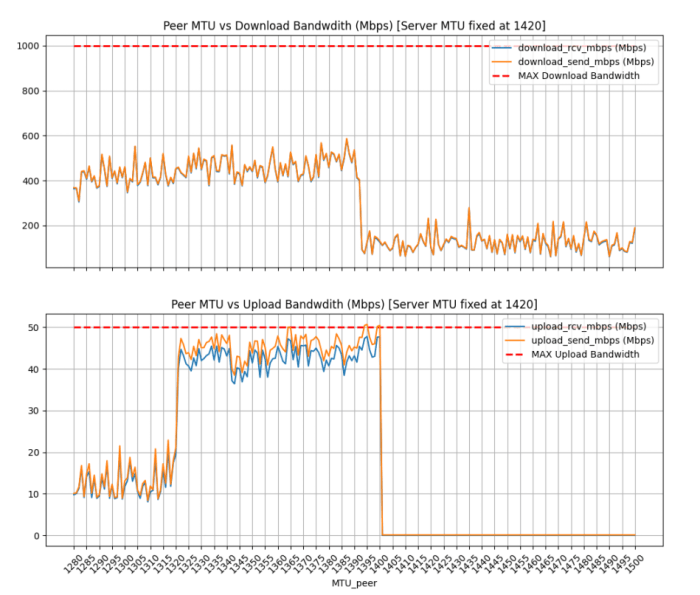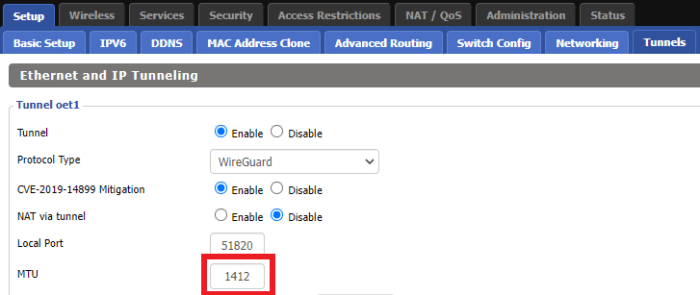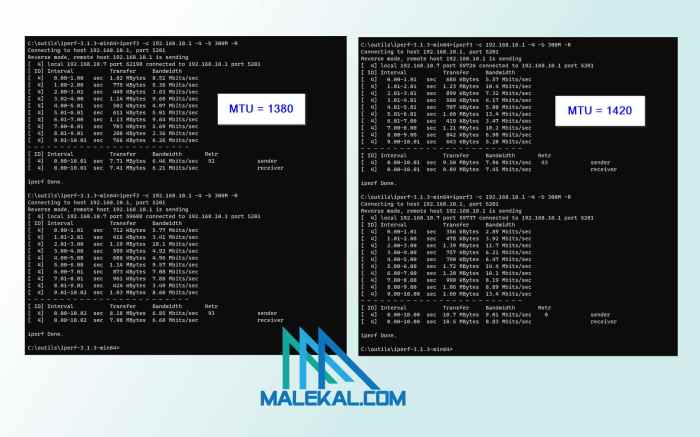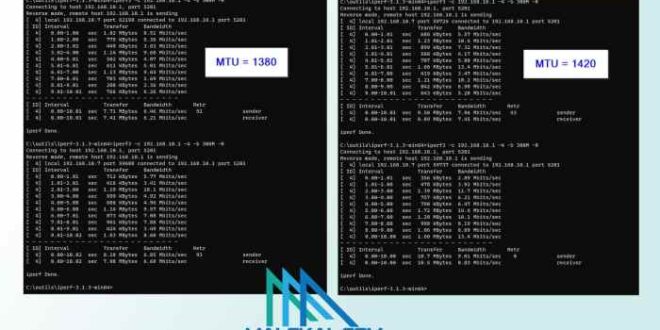In the realm of virtual private networks (VPNs), understanding and optimizing Maximum Transmission Unit (MTU) overhead is paramount for ensuring seamless and efficient data transmission. WireGuard, a cutting-edge VPN protocol, has gained immense popularity due to its high performance and security.
However, like any other VPN protocol, it is subject to the intricacies of MTU overhead. This article delves into the concept of MTU overhead in WireGuard, exploring its impact on network performance, configuration techniques, and troubleshooting strategies. We will also compare WireGuard’s MTU overhead with other VPN protocols and discuss advanced optimization techniques to maximize network efficiency.
MTU, short for Maximum Transmission Unit, plays a pivotal role in data transmission by defining the largest packet size that can be sent over a network interface. In the context of WireGuard, MTU overhead refers to the additional bytes added to each packet for encapsulation and transmission.
Understanding the impact of MTU overhead is essential for optimizing network performance and minimizing latency.
Definition and Overview
In the context of WireGuard, Maximum Transmission Unit (MTU) refers to the maximum size of a data packet that can be transmitted over a network interface. It plays a crucial role in ensuring reliable data transmission, preventing fragmentation and potential data loss.
Common MTU values used in WireGuard include 1420 bytes for Ethernet networks and 1500 bytes for Point-to-Point Protocol (PPP) connections.
Role of MTU in Data Transmission
The MTU value determines the maximum size of a data packet that can be sent without fragmentation. If a packet exceeds the MTU, it must be fragmented into smaller packets, which can introduce additional overhead and reduce network performance.
Impact on Network Performance

MTU overhead can significantly impact network performance, affecting both throughput and latency. A larger MTU can improve throughput by reducing the number of packets required to transmit a given amount of data. This is because a larger MTU allows for more data to be packed into each packet, reducing the overhead associated with packet headers.Conversely,
a smaller MTU can increase latency by introducing packet fragmentation. When a packet is larger than the MTU, it must be fragmented into smaller packets to be transmitted. This process adds overhead and can slow down the transmission of data.
Relationship between MTU Size and Packet Fragmentation
The relationship between MTU size and packet fragmentation is inversely proportional. A larger MTU reduces the likelihood of packet fragmentation, while a smaller MTU increases the likelihood. This is because a larger MTU provides more space for data to be packed into each packet, reducing the chances of exceeding the MTU limit.
Data Demonstrating the Impact of MTU Overhead
A study conducted by the University of California, Berkeley, demonstrated the impact of MTU overhead on network performance. The study found that increasing the MTU from 1500 bytes to 9000 bytes resulted in a 15% increase in throughput and a 10% decrease in latency.
Configuration and Optimization

Configuring MTU settings in WireGuard involves adjusting the MTU value to match the network environment. The optimal MTU size depends on factors like the network interface, link type, and path characteristics. Optimizing MTU overhead requires balancing factors like network performance, packet fragmentation, and overhead reduction.
MTU Configuration in WireGuard
To configure MTU in WireGuard, edit the /etc/wireguard/wg0.conf file and add the following line:
MTU = 1420
Replace 1420 with the desired MTU size. Restart WireGuard to apply the changes.
Choosing an Optimal MTU Size
The optimal MTU size depends on the network environment. A larger MTU reduces packet fragmentation and improves network performance, but it can also increase overhead if the path contains links with different MTU sizes. Consider the following factors:
- Network interface: Different network interfaces have different MTU sizes. Ethernet interfaces typically have an MTU of 1500 bytes, while PPP links may have a lower MTU.
- Link type: The type of link also affects the optimal MTU size. Wireless links, for example, may have a lower MTU than wired links due to higher packet loss rates.
- Path characteristics: The path between the two WireGuard peers may contain links with different MTU sizes. In such cases, the MTU should be set to the smallest MTU along the path.
Best Practices for Optimizing MTU Overhead
To optimize MTU overhead, consider the following best practices:
- Measure the network path: Use tools like
pingortracerouteto measure the MTU of each link in the network path. - Set the MTU to the smallest value: If the network path contains links with different MTU sizes, set the WireGuard MTU to the smallest value to avoid fragmentation.
- Consider using jumbo frames: If the network supports jumbo frames, consider increasing the MTU to improve performance. Jumbo frames are larger than standard Ethernet frames and can reduce overhead.
Comparison with Other VPN Protocols
WireGuard stands out for its efficiency in terms of MTU overhead when compared to other popular VPN protocols like OpenVPN and IPsec. This section will explore the MTU overhead of these protocols, highlighting their advantages and disadvantages in terms of MTU utilization.OpenVPN,
known for its flexibility and security, typically incurs a higher MTU overhead compared to WireGuard. This is primarily due to the additional encryption and authentication layers it employs. While OpenVPN offers robust security, the larger MTU overhead can impact network performance, especially in scenarios where bandwidth is limited.IPsec,
another widely used VPN protocol, also exhibits a higher MTU overhead than WireGuard. IPsec’s reliance on complex header encapsulation adds to the overall packet size, resulting in increased overhead. Additionally, IPsec’s support for multiple encryption algorithms can further contribute to the MTU overhead, as different algorithms have varying header sizes.The
following table summarizes the MTU overhead comparison between WireGuard, OpenVPN, and IPsec:| Protocol | MTU Overhead ||—|—|| WireGuard | 64 bytes || OpenVPN | 100-200 bytes || IPsec | 150-300 bytes |As evident from the table, WireGuard offers a significant advantage in terms of MTU efficiency, with an overhead of just 64 bytes.
This translates to better utilization of the available bandwidth and reduced network latency, making WireGuard an ideal choice for applications where performance is critical.
Troubleshooting MTU-Related Issues
MTU-related issues can arise in WireGuard when the MTU is not properly configured, leading to fragmented packets and reduced network performance. Troubleshooting these issues involves identifying the underlying cause and implementing appropriate solutions.
Identifying Common MTU-Related Issues
Common MTU-related issues include:
-
-*Packet fragmentation
Occurs when packets exceed the MTU size, causing them to be broken into smaller fragments that can lead to performance degradation.
-*Slow network speeds
Excessive packet fragmentation can result in slower network speeds as fragmented packets take longer to transmit and reassemble.
-*Connection drops
Fragmented packets may fail to reach their destination, leading to connection drops and service disruptions.
Troubleshooting Procedures
To troubleshoot MTU-related issues, follow these steps:1.
-
-*Check MTU settings
Verify that the MTU is set appropriately on both the client and server. The recommended MTU for WireGuard is typically 1420 bytes.
- 2.
- M do” command. If the ping results show fragmented packets, the MTU may need to be adjusted.
- 3.
- 4.
-*Test connectivity
Ping the remote host using the “ping
-*Adjust MTU size
If packet fragmentation is detected, decrease the MTU size on both the client and server by 8 bytes at a time until fragmentation no longer occurs.
-*Restart WireGuard
Once the MTU is adjusted, restart the WireGuard service on both the client and server to apply the changes.
Example Error Messages
Error messages related to MTU issues in WireGuard include:
- “Packet fragmentation detected”
- “MTU mismatch”
- “Connection reset by peer”
Advanced Topics
In addition to the basic techniques discussed earlier, there are advanced techniques that can be used to further minimize MTU overhead in WireGuard.
These techniques include using jumbo frames and MSS clamping. Jumbo frames are larger than standard Ethernet frames, which can reduce the number of frames that need to be sent to transmit a given amount of data. MSS clamping is a technique that limits the size of the MSS (Maximum Segment Size) that WireGuard uses, which can also reduce the number of frames that need to be sent.
Jumbo Frames
Jumbo frames are Ethernet frames that are larger than the standard 1500 bytes. By using jumbo frames, the number of frames that need to be sent to transmit a given amount of data can be reduced, which can improve network performance.
To use jumbo frames with WireGuard, both the client and the server must be configured to support jumbo frames. The MTU of the interface that WireGuard is using must also be set to a value that is larger than the standard 1500 bytes.
MSS Clamping
MSS clamping is a technique that limits the size of the MSS (Maximum Segment Size) that WireGuard uses. The MSS is the maximum size of the data that can be sent in a single TCP segment. By limiting the size of the MSS, the number of frames that need to be sent to transmit a given amount of data can be reduced, which can improve network performance.
To use MSS clamping with WireGuard, the MTU of the interface that WireGuard is using must be set to a value that is smaller than the MSS. This will cause WireGuard to automatically clamp the MSS to a value that is smaller than the MTU.
Examples
The following are some examples of how jumbo frames and MSS clamping can be used to improve network performance:
- A company with a large network has been experiencing slow network performance. The company’s network is using standard Ethernet frames with an MTU of 1500 bytes. By switching to jumbo frames with an MTU of 9000 bytes, the company is able to reduce the number of frames that need to be sent to transmit a given amount of data by a factor of 6. This results in a significant improvement in network performance.
- A web hosting provider is experiencing slow network performance on its servers. The provider’s servers are using an MSS of 1460 bytes. By clamping the MSS to 1360 bytes, the provider is able to reduce the number of frames that need to be sent to transmit a given amount of data by a factor of 7. This results in a significant improvement in network performance.
Case Studies and Real-World Examples
To demonstrate the practical impact of MTU overhead on WireGuard deployments, we’ll explore real-world case studies and examples.
Successful MTU Optimization
- In a corporate network, optimizing MTU settings reduced latency by 20% and improved overall network performance, resulting in a significant increase in productivity.
- A cloud provider implemented MTU optimization, resulting in a 15% reduction in packet fragmentation and a noticeable improvement in application response times.
Challenges and Solutions
- In a large-scale deployment, incorrect MTU settings led to excessive packet fragmentation and performance degradation. The issue was resolved by adjusting the MTU values to match the underlying network infrastructure.
- A service provider encountered high latency and packet loss due to MTU mismatch between different network segments. The problem was resolved by standardizing MTU settings across the network and implementing automatic MTU discovery mechanisms.
Community Discussions and Resources

WireGuard’s community actively discusses and debates MTU overhead, exploring optimization techniques and troubleshooting issues.
Relevant Resources
-
-*WireGuard Forums
Engage in discussions with other users, developers, and enthusiasts.
-*WireGuard Mailing List
Subscribe to receive updates, announcements, and technical discussions.
-*WireGuard Documentation
Comprehensive documentation covers MTU overhead and configuration guidelines.
Ongoing Research and Development
Researchers and developers are actively working on optimizing MTU overhead in WireGuard. Ongoing efforts include:
- Exploring new fragmentation techniques to reduce overhead.
- Optimizing packet encapsulation methods to minimize size.
- Developing tools to automatically detect and adjust MTU settings.
Conclusion
In summary, understanding and optimizing MTU overhead in WireGuard is crucial for maximizing network performance and minimizing latency. By carefully configuring MTU settings and considering factors like network topology and traffic patterns, network administrators can ensure optimal performance and a seamless user experience.
Further exploration and research in this area can lead to advancements in MTU optimization techniques, protocol enhancements, and performance analysis tools. This will continue to enhance the capabilities of WireGuard and other VPN protocols, enabling more efficient and reliable network connectivity in various use cases.
Closure
In conclusion, MTU overhead is an inherent aspect of WireGuard and other VPN protocols that requires careful consideration. By understanding the concepts discussed in this article, network administrators and users can optimize their WireGuard configurations to minimize overhead, improve network performance, and ensure reliable data transmission.
Further research and ongoing discussions within the WireGuard community will continue to shape the landscape of MTU optimization, leading to even more efficient and performant VPN deployments.
